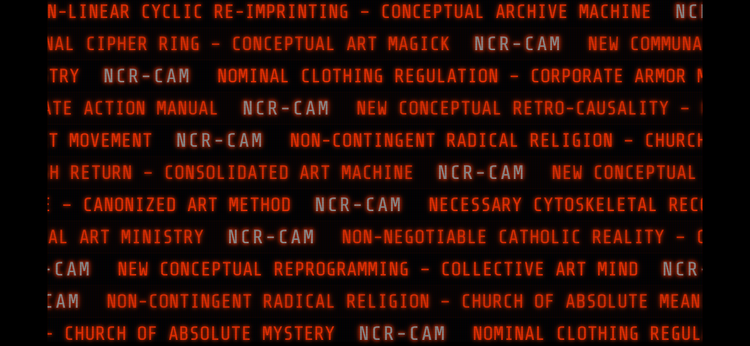Dunes

The Dune series, spanning six novels by Frank Herbert, takes place in a distant future where humanity has spread across the galaxy under the rule of the Padishah Emperor. The story revolves around the desert planet Arrakis, also known as Dune, and its most valuable resource: spice melange.
Spice is a psychoactive drug with various properties. It extends lifespan, grants heightened awareness, and is crucial for safe interstellar travel. As the sole source of spice, Arrakis becomes the center of a complex web of political intrigue, religious fanaticism, and ecological concerns.

The story begins with Duke Leto Atreides, who accepts stewardship of Arrakis, unaware of a plot orchestrated by the Emperor and the cruel Baron Harkonnen, the former ruler. The Atreides face betrayal and brutal conflict, leading to the young Paul Atreides' rise to power alongside his mother, Lady Jessica, a member of the mysterious Bene Gesserit sisterhood.
Paul's journey is central to the series. He grapples with his messianic destiny, the Fremen, a native population of Arrakis who worship him, and the consequences of his leadership. The series explores themes of:
- Resource scarcity and control: Spice represents a limited resource with immense economic and political power, leading to conflict and manipulation.
- Environmentalism: Dune's harsh environment emphasizes the delicate balance of ecosystems and the potential consequences of resource exploitation.
- Messianism and leadership: The series explores the dangers and responsibilities associated with charismatic leadership and the potential for misuse of power.
- Religious fanaticism: The Fremen's messianic view of Paul highlights the complexities of religious belief and its potential for both positive and negative consequences.
Later novels delve into Paul's children, Leto II and Ghanima, and their struggles to establish a stable and just society on Arrakis. While the series delves into various philosophical and political themes, the economic significance of spice remains a constant undercurrent, highlighting the profound impact of resource scarcity and control on the entire galactic society.
It's important to note that Brian Herbert and Kevin J. Anderson continued the series with additional novels after Frank Herbert's death, but this summary focuses on the original six novels by Frank Herbert.

Frank Herbert's Dune series exhibits a clear influence from Roman classical archetypal stories, drawing inspiration from various aspects of these "classic masterworks." Here's a comparative analysis:
Similarities:
- Hero's Journey: Both Dune and Roman epics like the Aeneid by Virgil feature the monomyth, a universal hero's journey. Paul Atreides, like Aeneas, faces trials, navigates political landscapes, and embarks on a quest to fulfill a greater destiny, ultimately shaping the future of his world.
- Chosen One: Both narratives present protagonists as chosen ones. Paul, like Aeneas, is destined for greatness due to his lineage and possesses unique abilities. This divine intervention or predetermined fate echoes the Roman concept of "fatum."
- Betrayal and Revenge: Similar to stories like Julius Caesar by William Shakespeare, Dune features themes of betrayal and revenge. Duke Leto's fall and Paul's subsequent actions mirror the struggles for power and the pursuit of vengeance prevalent in Roman plays.
- Political Intrigue: Dune, like Roman historical accounts and dramas, explores complex political machinations and power struggles. The intricate web of alliances, manipulations, and power grabs between the Padishah Emperor, the Bene Gesserit, and the Great Houses mirror the political realities of the Roman Republic and Empire.
- Religious Fervor: Roman epics often explore the power of deities and religious beliefs. Similarly, Dune depicts the Fremen's religious fervor surrounding Paul, drawing parallels to the intense devotion Romans held for their gods and emperors.
Specific Inspirations:
- Paul Atreides: Some argue Paul's character draws inspiration from Alexander the Great, a young, charismatic leader who conquered vast territories. Both figures possess exceptional military and strategic skills, inspire fierce loyalty, and grapple with the weight of their ambitions.
- Bene Gesserit: This mysterious sisterhood with advanced breeding programs and political influence might find parallels in the Vestals, Roman priestesses who held significant influence and wielded religious power.
- Spice Melange: The control and manipulation surrounding spice can be compared to the significance of gold in the Roman Empire, a precious resource that fueled the economy and shaped political decisions.
It is important to remember that Dune is not a mere retelling of Roman stories. Herbert draws inspiration from various sources, weaving them into a unique and complex narrative. The series explores themes beyond what is found in Roman classics, delving into environmentalism, resource scarcity, and the dangers of messianic leadership.
Overall, Dune serves as a compelling example of how classic archetypes and themes can be reinterpreted and adapted to create a captivating story relevant to modern audiences.

- Leaving Childhood: Both Dune and many classical European folk tales involve the protagonist leaving their familiar childhood environment and embarking on a journey. Paul Atreides leaves his comfortable life on Caladan to rule Arrakis, mirroring the young hero who ventures out into the world in many folk tales.
- Tests and Challenges: The protagonist in both Dune and folk tales encounters numerous tests and challenges that force them to grow and develop their skills. Paul faces physical dangers, political intrigue, and internal struggles, similar to how folk heroes overcome obstacles like dragons, witches, or treacherous landscapes.
- Acquiring Skills and Wisdom: Through their experiences, the protagonist in both narratives acquires new skills and wisdom. Paul learns to harness his abilities, navigate complex political situations, and understand the Fremen culture, mirroring the way folk heroes learn valuable lessons like swordsmanship, cunning, or the language of animals.
- Transformation and Return: By the end, the protagonist undergoes a transformation and often returns home a changed individual. Paul, once a young duke, becomes a powerful leader and a symbol of hope for the Fremen, echoing the way folk heroes return from their journeys having matured and gained valuable knowledge.
Specific Parallels:
- "The Three Little Pigs": Both Dune and this tale involve facing challenges and learning from them. Paul, like the third pig, builds a stronger foundation (his understanding of the Fremen and the desert) to overcome the challenges he faces.
- "Cinderella": Similar to Cinderella, Paul undergoes a significant transformation from his initial position as a young noble to a powerful figure. Both characters experience a shift in their social status and the expectations placed upon them.
- "Persephone and the Pomegranate": Both Paul and Persephone experience a descent into a new and unfamiliar world (Arrakis and the underworld, respectively) that leads to their transformation and eventual return to their original world, albeit forever changed.
It's important to note that Dune is a complex narrative that transcends the typical coming-of-age story. While it shares elements with classical European folk tales, it also delves into deeper themes of power, ecology, and the consequences of messianic leadership.
Overall, Dune employs the archetypal framework of the coming-of-age story found in classical European folk tales, offering a familiar foundation for exploring the protagonist's journey and transformation within a rich and intricate science fiction setting.
- The Physical Landscape: On the most obvious level, "dune" refers to the dominant physical feature of Arrakis, the desert planet. The endless, shifting sandscapes become a visual metaphor for the ever-evolving political landscape, the hidden depths of humanity's capabilities, and the mysteries of the universe itself.
- A Sense of Isolation: Dunes evoke a sense of vastness and isolation. This reflects Paul Atreides' journey into the unknown, the Fremen's struggle to survive in the harsh desert, and the broader feeling of humanity being a tiny speck in a vast, uncaring universe.
- Impermanence and Change: Dunes are constantly shifting, shaped by wind and time. Similarly, the Dune universe is defined by relentless power struggles, the rise and fall of empires, and the unpredictable currents of destiny. The world of Dune teaches that nothing is permanent, everything is subject to change.
- Hidden Treasures: Beneath the surface of a dune may lie hidden resources or unexpected life. Likewise, Arrakis' sands conceal the precious spice, and Paul Atreides possesses untapped potential within him. The title hints at something valuable hidden beneath the surface.
Sonic and Poetic Resonance
- Short and Memorable: "Dune" is a brief word that is easy to remember and pronounce. This helps establish a strong, iconic identity for the series.
- Evocative Sound: The word "dune," with its soft "d" and long "oo" sound, carries an enigmatic, almost melancholy feeling. This aligns with the novel's themes of mystery, prophecy, and the weight of history.
- Echo of "Doom": Herbert reportedly intended for the word "Dune" to subtly resonate with the word "doom." This foreshadows the looming conflicts, potential dangers, and the potential for both immense destruction and profound creation within the narrative.
Additional Considerations
- Environmental Commentary: "Dune" highlights the fragility and power of natural environments. The choice of a word representing a specific ecological feature reinforces Herbert's key message of humanity's interconnectedness with the natural world.
- Universality: Dunes are found on various planets, including Earth, making it a relatable term while hinting at broader cosmic themes.
In conclusion, Frank Herbert's choice of "Dune" as the title for his series is brilliant in its simplicity and multifaceted implications. It encapsulates the physical environment, core themes of change, hidden potential, and the haunting undercurrent of potential doom – all within a single, evocative word.






Member discussion